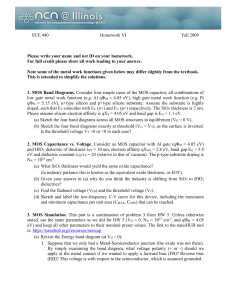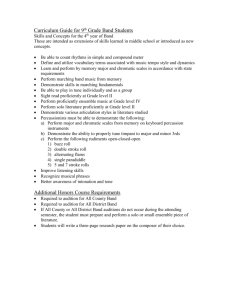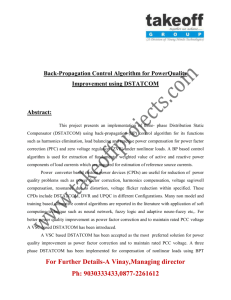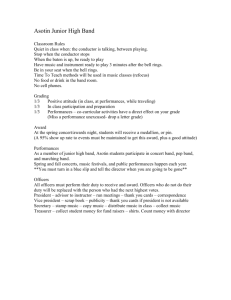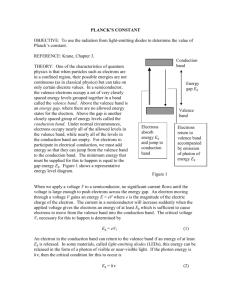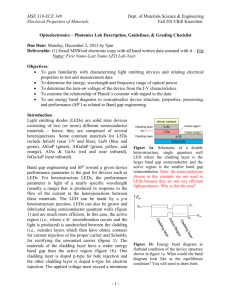MEASUREMENT OF BAND GAP IN SEMICONDUCTOR
advertisement
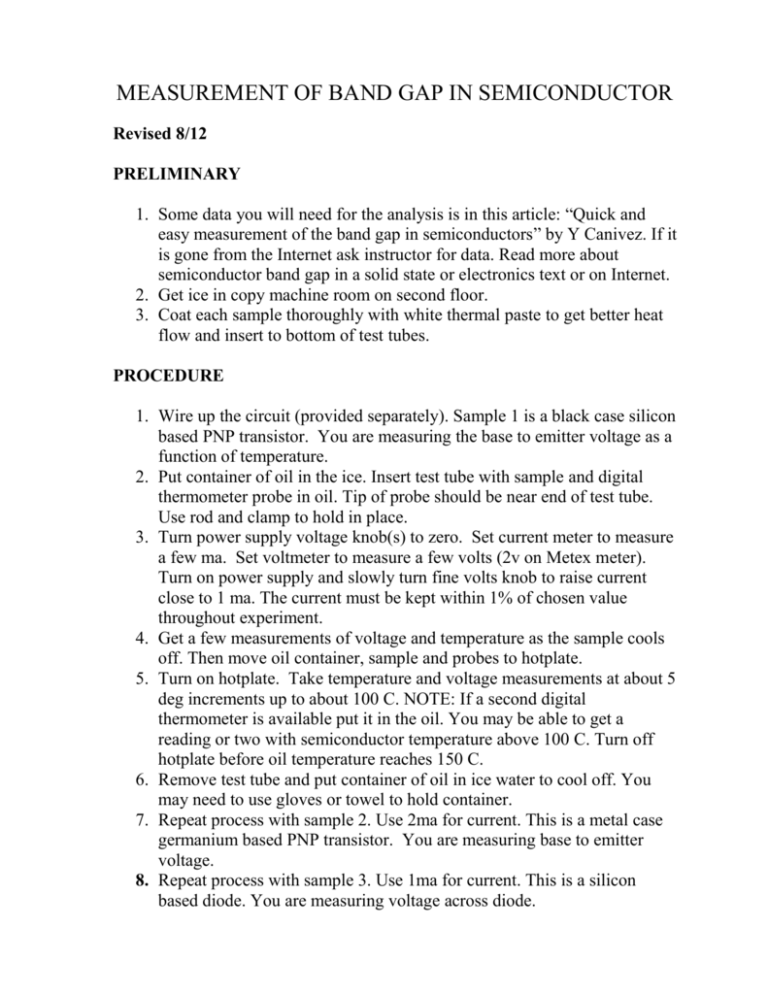
MEASUREMENT OF BAND GAP IN SEMICONDUCTOR Revised 8/12 PRELIMINARY 1. Some data you will need for the analysis is in this article: “Quick and easy measurement of the band gap in semiconductors” by Y Canivez. If it is gone from the Internet ask instructor for data. Read more about semiconductor band gap in a solid state or electronics text or on Internet. 2. Get ice in copy machine room on second floor. 3. Coat each sample thoroughly with white thermal paste to get better heat flow and insert to bottom of test tubes. PROCEDURE 1. Wire up the circuit (provided separately). Sample 1 is a black case silicon based PNP transistor. You are measuring the base to emitter voltage as a function of temperature. 2. Put container of oil in the ice. Insert test tube with sample and digital thermometer probe in oil. Tip of probe should be near end of test tube. Use rod and clamp to hold in place. 3. Turn power supply voltage knob(s) to zero. Set current meter to measure a few ma. Set voltmeter to measure a few volts (2v on Metex meter). Turn on power supply and slowly turn fine volts knob to raise current close to 1 ma. The current must be kept within 1% of chosen value throughout experiment. 4. Get a few measurements of voltage and temperature as the sample cools off. Then move oil container, sample and probes to hotplate. 5. Turn on hotplate. Take temperature and voltage measurements at about 5 deg increments up to about 100 C. NOTE: If a second digital thermometer is available put it in the oil. You may be able to get a reading or two with semiconductor temperature above 100 C. Turn off hotplate before oil temperature reaches 150 C. 6. Remove test tube and put container of oil in ice water to cool off. You may need to use gloves or towel to hold container. 7. Repeat process with sample 2. Use 2ma for current. This is a metal case germanium based PNP transistor. You are measuring base to emitter voltage. 8. Repeat process with sample 3. Use 1ma for current. This is a silicon based diode. You are measuring voltage across diode. ANALYSIS: 1. 2. 3. 4. Enter data in Excel spreadsheet Convert temperature to Kelvin. Plot qV vertically versus Kelvin temperature. The band gap is the intercept. One way to get this is to use add trend line command. 5. Compare your band gap value in eV to book value. Compute % error. 6. Repeat analysis using correction factor from background article. Compute correction factor for each temperature. You will need value of k in ev/deg not J/deg. In this system e or q = 1. 7. Add the correction factor to each voltage. 8. Plot qV + correction vertically versus Kelvin temperature. 9. The band gap is once more the intercept. 10.Compare your band gap value in eV to book value. Compute % error. Determine how much effect the correction factor has on value of band gap. Repeat analysis with other samples.


